We explain what the Big Bang Theory is and its general characteristics. Also, the Big crunch theory and the expanding universe.
What is the Big Bang?
The Big Bang Theory, also called the Big Bang Theory, holds that the universe as we know it began billions of years ago in a big bang. At the time of this explosion, all the matter that exists in the universe today was concentrated in one point.
From the moment of the explosion, matter began to expand and is still doing so today . Therefore, the Big Bang theory includes the theory of the expanding universe. In addition to expanding, matter began to form more complex structures, from atoms and molecules , to the living organisms we know today.
The name "Big Bang" was first used by physicist Fred Hoyle , who patronized the theory during a BBC interview . The idea of a great explosion ("a big bang") seemed absurd to Hoyle.
Characteristics of the Big Bang theory :
Big bang date
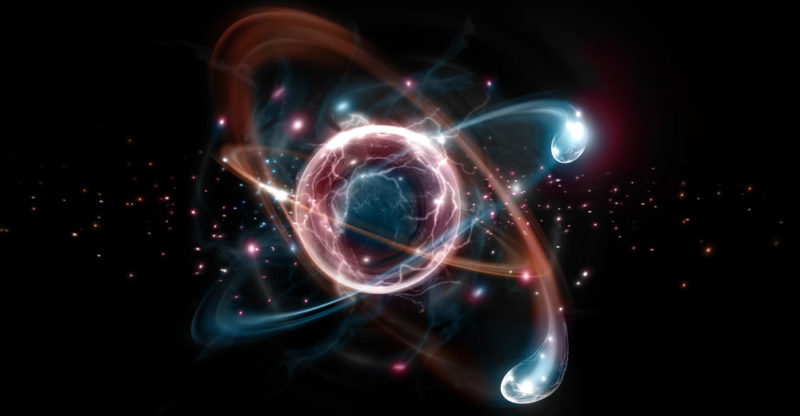 The data available to scientists suggests that the explosion that gave rise to the universe occurred approximately 13.81 billion years ago . This stage is called the primeval universe and it is assumed that the particles had a very high energy .
The data available to scientists suggests that the explosion that gave rise to the universe occurred approximately 13.81 billion years ago . This stage is called the primeval universe and it is assumed that the particles had a very high energy .In this explosion the first protons, neutrons and electrons were formed . Protons and neutrons were organized in nuclei while electrons, due to their electrical charge, were organized in orbits around them. This is how matter originated.
Formation of stars and galaxies
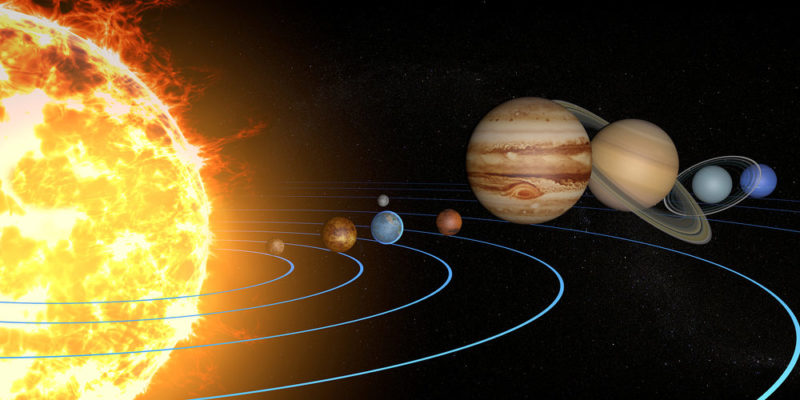 The stars as we know them today began to form long after the Big Bang:
The stars as we know them today began to form long after the Big Bang:
- First stars . For a long time it was believed that stars were 13.25 billion years old, that is, they appeared approximately 550 million years after the Big Bang. However, since 2007 it has been known that there are earlier galaxies, so it is suspected that the first stars formed more than 13.5 billion years ago.
- First Galaxies . In 2007, at least six galaxies were identified that formed 13.2 billion years ago. However, since 2011 evidence was found that older galaxies existed, so it is estimated that the first ones formed 13.6 billion years ago, that is, only 200 million years after the Big Bang.
- Sun and solar system . That the solar system and sun were formed 4.6 billion years ago.
Evidence that the universe is expanding
Although the beginning of the universe from a big bang is a theory, it is not “just a theory”, but is based on a wide variety of scientific evidence.
- Olbers paradox. The darkness of the night sky.
- Hubble's law. It can be verified by observation that galaxies are moving away from each other.
- Homogeneity of the distribution of matter.
- Tolman effect (variation of surface brightness).
- distant supernovae. A temporal dilation is observed in their light curves .
Evidence of the big bang
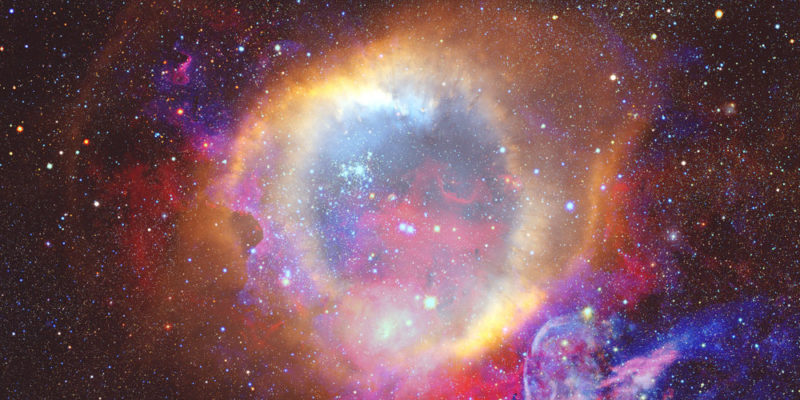 What we call "the explosion" of the Big Bang, was a phase of high density and temperature . The evidences that the universe went through that are:
What we call "the explosion" of the Big Bang, was a phase of high density and temperature . The evidences that the universe went through that are:
- Observations of the cosmic microwave background. What is perceived as "background noise" is a temperature of 2.7 degrees Kelvin which is the current remnant of the high temperature from the Big Bang.
- Measurements of abundances of light chemical elements. The composition of the universe is three quarters hydrogen and one quarter helium (they are the two lightest elements). The heaviest atoms (the rest of the periodic table ) were born in the stellar cores.
Big Crunch Theory
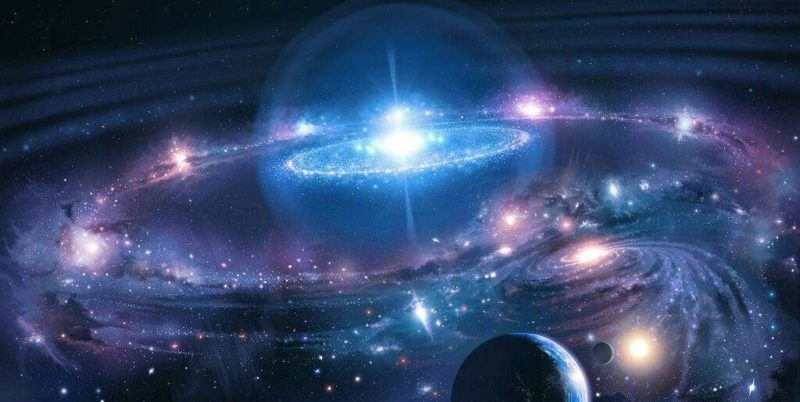 This theory is based on the fact that the expansion of the universe , produced by the Big Bang, will slowly slow down until the opposite effect begins: the contraction of the universe. This concentration would end in a great implosion or "Big Crunch", which would be the opposite of the great explosion. However, there is still no evidence to confirm this theory.
This theory is based on the fact that the expansion of the universe , produced by the Big Bang, will slowly slow down until the opposite effect begins: the contraction of the universe. This concentration would end in a great implosion or "Big Crunch", which would be the opposite of the great explosion. However, there is still no evidence to confirm this theory.
Discoverers

The expanding universe theory was first formulated in 1922 by Alexander Friedmann . He was based on Albert Einstein's theory of general relativity (1915).
In 1927, the Belgian priest Georges Lemaître built on the work of scientists Einstein and de Sitter to independently arrive at the same conclusions as Friedmann about the expanding universe.
In 1929 Edwin Hubble provided evidence for the expanding universe , through the observation that galaxies are receding in all directions. In 1931 Lemaître was the first scientist to propose the hypothesis of a primordial atom that exploded.
The oscillating universe
The alternative oscillating universe theory holds that the universe is constantly oscillating between a Big Bang and a Big Crunch . It was developed by Richard Tolman and has not been verified.
Steady State and Continuous Creation
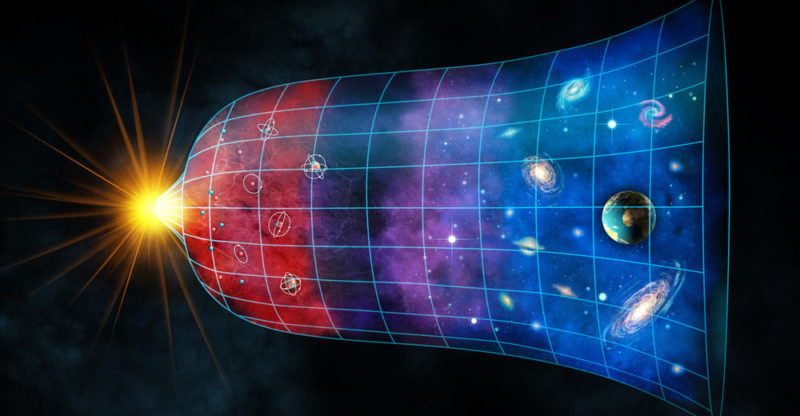 The alternative theory of the steady state and continuous creation, maintains that if the universe is expanding, it means that there is less and less density of matter , because the particles are more and more distant. So, according to this theory, the density of the universe is kept constant by the "continuous creation" of matter. This theory has not been proven.
The alternative theory of the steady state and continuous creation, maintains that if the universe is expanding, it means that there is less and less density of matter , because the particles are more and more distant. So, according to this theory, the density of the universe is kept constant by the "continuous creation" of matter. This theory has not been proven.
Inflationary theory
The alternative "Inflationary" theory is based on the same premises as the Big Bang theory , but holds that there was an initial process called "inflation" in which the expansion of the universe was exponentially faster. This theory has not been proven.
Opponents: creationism
 Creationism maintains that the universe was created by God , that is to say that it was a voluntary and deliberate act, and not the simple explosion of a primordial atom.
Creationism maintains that the universe was created by God , that is to say that it was a voluntary and deliberate act, and not the simple explosion of a primordial atom.The Big Bang theory conflicts with some religious beliefs because it does not point to any will (ie the action of a God ) at the origin of the universe.
Even those who accept the Big Bang theory assuming that this explosion could also be divine will, are faced with the enormous antiquity of the universe that puts into perspective the possible importance that humanity (of insignificant antiquity compared to the universe) could have in the divine plan.
The above content published at Collaborative Research Group is for informational and educational purposes only and has been developed by referring to reliable sources and recommendations from technology experts. We do not have any contact with official entities nor do we intend to replace the information that they emit.
Luke is passionate about fostering student involvement and connection. He studied psychology for his major and likes learning about the past. Luke aims to specialize in artificial intelligence and cybersecurity. .
Leave a reply
Your email address will not be published. Required fields are marked *Recent post

Sport: What Is It, Types, Risks, Features, Characteristics and Examples

Dogs: Emergence, Features, Characteristics, Feeding and Breeds

Story: Definition, Elements, Structure, Features and Characteristics

